
How IKEA Turned a Troll’s House into a Home
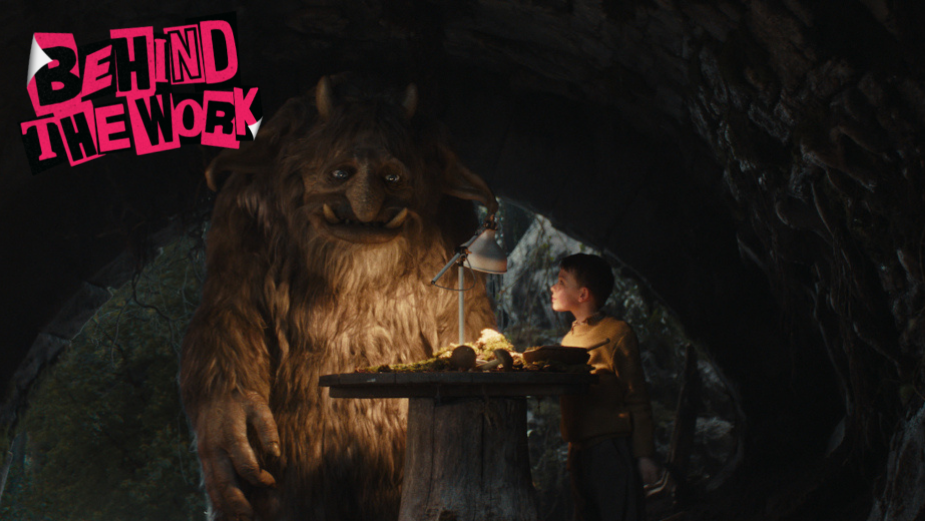
Do trolls appreciate IKEA? It’s an oddly specific question, but one which now has an answer, thanks to IKEA’s combined efforts with Rethink. Telling the story of a young boy who befriends a troll by offering an IKEA lamp to brighten its living space, ‘The Troll’ not only serves as the second iteration of IKEA’s ‘Bring Home to Life’ platform (which launched in 2022), but definitively informs viewers that, in fact, trolls do appreciate IKEA for its ability to furnish and bring any home - even the bottom of a bridge - to life.
Directed by OPC’s Nick Ball, the two-minute spot was shot in Slovenia, both on location at a bridge, and in-studio, with an on-stage, scaled recreation of the bridge. Requiring the use of an 8-foot tall animatronic troll costume created by concept artist Aaron McBride and Czech puppeteer Martin Pec, this campaign will be running in Canada and Australia from January to April 2023, and also includes OOH, in-store, and social and digital elements.
To learn more, LBB’s Josh Neufeldt sat down with Rethink creative directors Robbie Percy and Caroline Friesen, IKEA Canada head of marketing Johanna Andrén and Nick, discussing how ‘The Troll’ came to be, and how it fits into IKEA’s plans for the coming calendar year.
LBB> This campaign represents the continuation of IKEA’s ‘Bring Home to Life’ platform, which launched in 2022. As such, what was the brief like, and what immediate ideas came to mind?
Johanna> We asked Rethink for a few key things to ensure that we could continue to drive an emotional connection with the many (Canadians and Australians) as we build on our brand platform, ‘Bring Home to Life’, to drive brand affinity.
The brief included requests to ensure that the work was bold and different enough to break through, while maintaining an IKEA twinkle to make it ownable. The brief also included our desire to use our core values such as kindness and togetherness to strengthen emotional connection, while continuing to position IKEA as the leader in life at home. Ultimately, we wanted to ensure that a key insight for us – how home and the life we live there can influence and improve your well-being – shone through, as we know that the connection between home and well-being is culturally relevant in both Canada and Australia.
Robbie & Caroline> Using a troll to highlight the impact people’s homes have on their well-being and mood was actually one of the ideas that came earlier in the process. If a sad, grumpy troll can make a change by sprucing up their home, there’s hope for all of us.
LBB> How did the previous work you’d done together impact the initial creative process? Was there a natural sense of progression, or was it just a matter of staying tonally relevant?
Robbie & Caroline> IKEA’s work has always had a bit of a twinkle to it, so that’s something we always keep in mind as we work on the brand. We’re always looking for fresh ways to do that, and this time it just so happened to be with an 8-foot troll.
Johanna> There was a progression in the sense that we aimed to build on our new brand platform, but at the same time, we wanted to remain true to our IKEA tone of voice or ‘twinkle in the eye’, while staying true to our brand personality and uniqueness. We are always striving to improve our creative based on performance and results, so we focused on dialling up the emotional connection to strengthen our branding for this campaign.
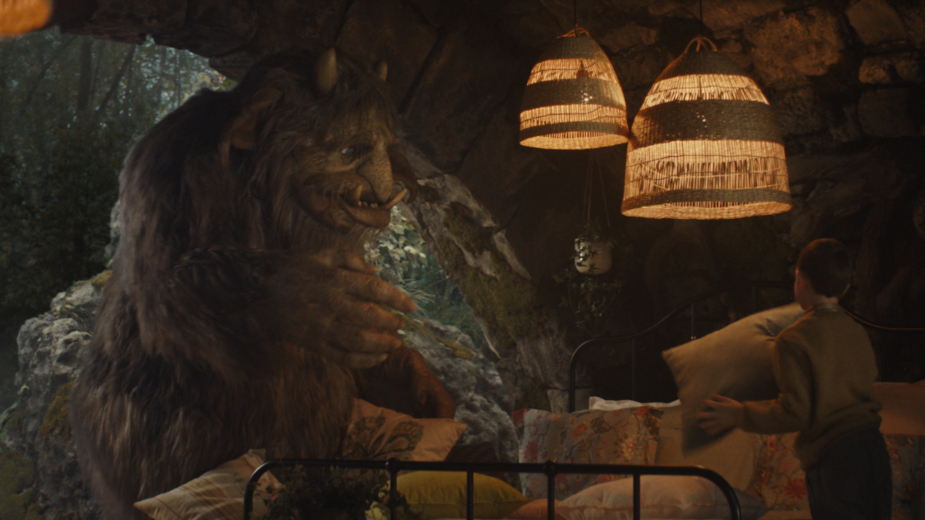
LBB> OPC’s Nick Ball directed the spot. What was working with him like, and what made him the right person for the job?
Robbie & Caroline> Right from the beginning, working with Nick was a pretty unique experience. He was in Mexico when he was sharing his treatment, and he actually walked us through it while he was riding a horse on the beach. We’re not even kidding!
Needless to say, Nick is amazing. Super collaborative, very passionate about every aspect of the process, and an amazing world builder. From the characters, to the sets, to the wardrobe, everything he did was so carefully considered, and it really makes the spot what it is.
LBB> Nick, why was this campaign something you were interested in?
Nick> As I read on a cushion the last time I went to IKEA to buy some Daim bars, ‘Home is where the heart is’. It’s a plush, cosy truth, but it does genuinely affect how we feel about everything. In a way, it’s like feng shui, or how your husband never uses the laundry basket, or your wife insists on having motivational cushions that read ‘Home is where the heart is’ on every seat – it has the power to dominate how you feel. I wanted to bring the scope of that emotional impact and distill it into ‘Terry the Troll’s’ tale to create a universally appealing story - something that dressed up a deeply human truth in a sweaty and stinky 8-foot troll costume. For me, it was all about that, and the subtle, magical opportunity for a beautifully designed narrative and accessible approach to storytelling.
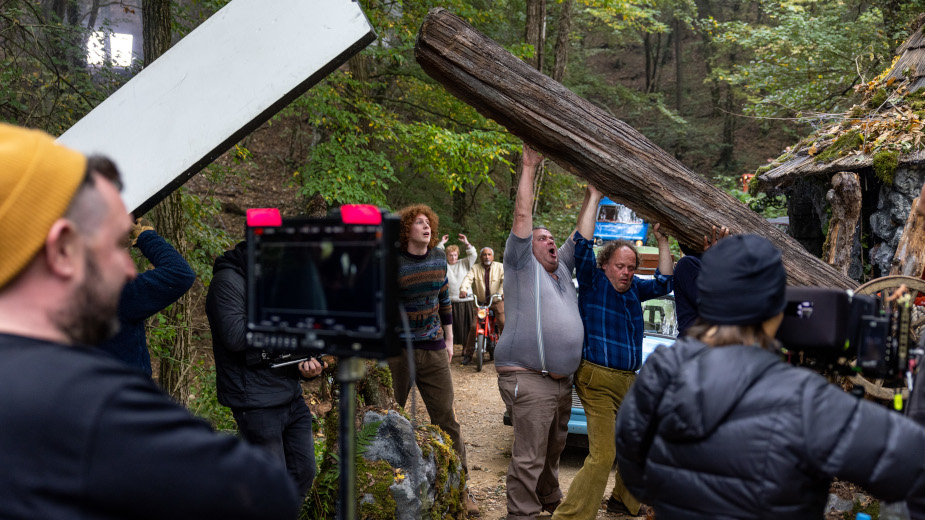
LBB> What was the initial concepting process like?
Nick> I’m a massive fan of ideas where there’s an opportunity to build a world from scratch. The legacy of whimsical and creative IKEA commercials is obvious to anyone who doesn’t live under a rock/bridge, and the opportunity to get my grubby little mitts on one was too good to pass up.
My treatment took a reasonably significant deviation from the original script, but retained the core idea of the troll living under the bridge as the kicking off point for the narrative. From there, we explored telling the story from a child’s point of view, as I felt it was strongest to see this journey of friendship grow through young eyes. This decision also helped ground the narrative through a more relatable perspective - giving the film a charming naivety that allows quirks of humour to come through, without them ever being forced for the sake of a gag.
LBB> You shot in Slovenia for this campaign! What made that the perfect country to shoot in, where exactly did you shoot, and, as a whole, what was the experience like?
Robbie & Caroline> It was actually the bridge that drew us to Slovenia. We were really looking for this old stone, fairytale kind of bridge that felt like it really could have a troll living underneath it. As it turned out, Slovenia had just the thing.
Shooting in Slovenia was great. It’s beautiful there - everywhere you go in Slovenia feels like you’re in a postcard. Plus, they have strong crews and production capabilities.
Nick> Ce iscete popolno pravljicno lokacijo potem ni krajev,ki bi bili bolj primerni kot Slovenija! Imeli smo štiri snemalne dni, snemali smo na mostu in njegovi okolici ter v studiu, kjer smo zgradili trolovo domovanje pod mostom (scenografsko je bilo razdeljeno na cas pred Ikea-o in na razlicne vmesne stopnje do koncnega Ikea izgleda) in fantkovo spalnico. (As you can tell, I immersed myself in the culture!)
I mean, if you’re after a fairytale-like setting, are there many places more appropriate than Slovenia?!
We shot for four days, on location for the bridge, and we also used a stage where we built under the bridge (capturing both the pre-IKEA post-IKEA phases) and the boy’s bedroom. I absolutely loved shooting in ‘The Shire’, as I’ve come to call it, so a huge thanks to the team at Division Film in Ljubljana who pulled off incredible miracles as they always do. If you’ve never been, you have to go!

LBB> Nick, did you have a hand in the casting process? And if so, what were you looking for?
Nick> For me, the best stories are always character-driven, and this was no exception. Casting is always my favourite part of the process, and if anyone ever took it away from me, I probably would give up on filmmaking. I love it that much.
We started by looking for trolls and put out a casting call for them… but after getting a lot of mean and nasty people replying to us on the internet saying, ‘they’re not real you f’ing idiots’ - we had to pivot and focus on casting a great kid to play the role of ‘Otto’. To do this, we saw hundreds for the role from across multiple countries. The age, the aesthetic, and the particulars around the child all didn’t matter as much as his performance. That was key, and we really wanted an incredibly sophisticated child actor who understood subtlety and nuance – someone who could bring his own to be in charge of the whole emotional arc of the film.
The great news was that we had time to get this right, so whilst we built the costume for our troll, we searched high and low to find the strongest actor out there. Ultimately, Finley Hanson just blew us away. He is so sophisticated in his approach to the work, and his idiosyncratic way of analysing the world around him allowed for this unique worldview and perspective to make the imagination of the story powerful.
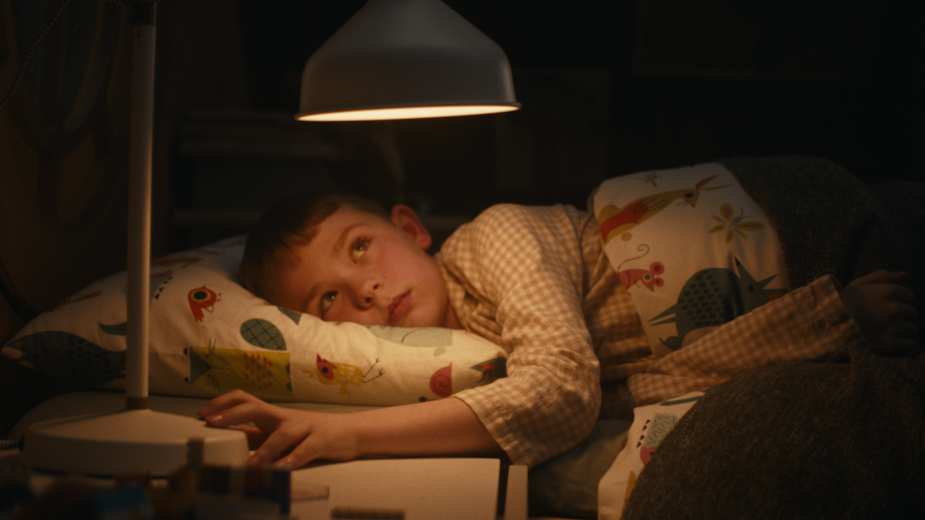
LBB> Speaking of building a troll costume, you worked with Czech puppet maker Martin Pec to create the troll. Please tell us about this! What went into bringing the troll to life?
Robbie & Caroline> Martin’s a bit of a mad scientist, which is exactly the type of person you want building your troll. He’s done some amazing characters before for brands like Zillow, and we’ve always been fans of his work. The final product was 8-feet-tall with animatronic elements for the movement of his eyes, ears, mouth and hands, and it took a whole team of puppeteers to operate it.
Nick> Before we got to Martin, I worked with legendary concept artist Aaron McBride to sketch the troll. ‘Terry’ needed to walk the line between feeling intimidating and carrying the burden of centuries of living under a bridge. But, he also could never be cartoony – it would have lost all legitimacy. Instead, there is a mythical world-weariness to him with a philosopher’s face… an existential pain exists behind his eyes, and a deep and brooding sensitivity cuts through. Ultimately, we always saw Terry as one of many faceless trolls sitting under one of the many boring stone bridges out there, and feeling as everyday and humdrum in our world as a dry, boring accountant does, in reality.
From there, the Czech mad scientist Martin (an absolute beast of a collaborator who smokes cigarettes and plays with flammable manufacturing elements all day long) got to work, building an incredibly articulated costume that was refined with the subtlest of VFX and some nuanced facial enhancement by the team at Parliament VFX.

LBB> A very memorable shot is the little boy dragging the IKEA bag along the riverbank. Is this just good acting, or was the bag actually very heavy?
Nick> Ha! Finley will tell you I made him work for his supper there, as I filled it with stacks of river rocks (!!) but the lad is strong - he’s from Manchester ‘innit.
The IKEA ‘Frakta’ bag was something I added in the treatment as a way to bring the brand into the story in a memorable way that ultimately served the narrative - without feeling forced. Sadly, I couldn’t find a place for hotdogs, elderflower sodas and puns on the product names, so we focused on the bag because they are iconic all over the world. Seeing it dragged through a beautiful fairytale-style forest was one of the first images that popped into my head after reading the initial script.
Building on this, I always want the brand to feel like it is a key narrative element that has the power to emotionally uplift the character’s performance and the whole tonality of the world. After all, this is advertising, so I approached my thinking by considering how the world is nothing without IKEA, and how then, when IKEA ultimately comes to town, it warms up the world and changes everything. In this, IKEA is the saviour of the world, both aesthetically and internally for Terry.
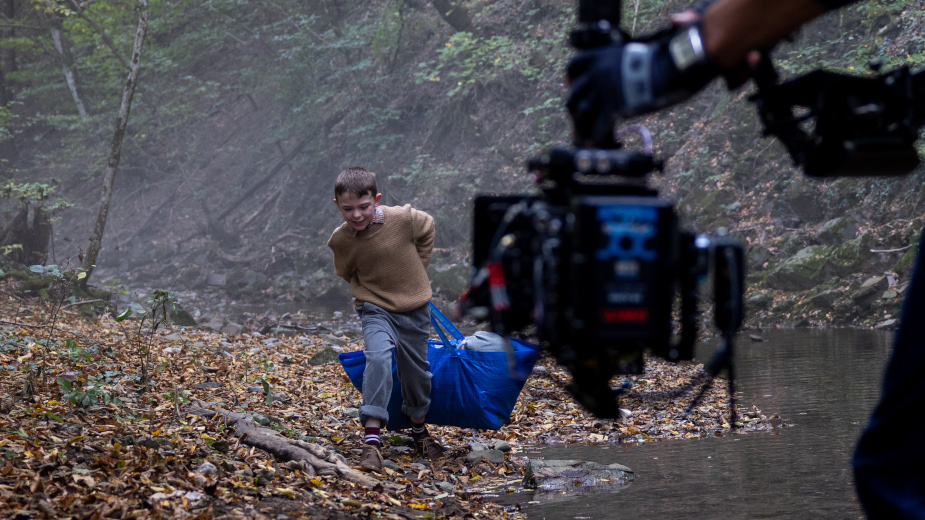
LBB> Setting up a home under the bridge is very satisfying to watch. How did you go about bringing this to life?
Nick> I’m a big method director, so I lived under a bridge for six months to prepare for this role! Thankfully, god blessed me with the body and brooding personality of Terry, so after that, it was all about lots of painstaking exploration and collaboration between my production designer, Marco Puig, and the wider IKEA team to figure out the pieces they wanted to focus on, before integrating and designing the space in a way that would feel appropriate under a bridge.
Ultimately, we really wanted to ensure that the end of the film was a huge contrast from where we started, and we needed to do so by showcasing how IKEA products worked with the environment in an organic way. We weren’t transforming the bridge into a modern apartment-like setting, but rather taking the best bits about Terry living under the bridge and enhancing it with IKEA. That’s the silly stupid fun of adland I love – getting to ask yourself in all seriousness, ‘now, how would an 846-year-old troll decorate his home under a bridge?’.
Johanna> We worked very closely with our internal partners at IKEA within the home furnishing and retail design teams, as well as our sales departments to select products that were low priced, iconic, and fit the storyline around well-being. And from this stage, we were also focused on product availability in both IKEA Canada and IKEA Australia. This vetting process takes approximately 12 weeks to ensure the products selected are meeting the needs of IKEA, as well as the needs of the creative production.
Our interior design leader, Lindsay Marsh, was instrumental in creating a detailed brief for the various spaces under the bridge. This brief broadened the troll’s world and added colour to his character, depicting him as an avid rock collector and tea drinker whose under-the-bridge home is akin to a studio apartment.
Donna Irvine, set designer, then built out the mood boards for each living space, considering each item’s place in the story and suitability for a troll’s home, as inspired by Marsh’s vision. The final design was inspired by storybook cottages and nostalgic patterns, with elements of natural textures - defying our expectations for a rugged troll and reflecting his gentle personality.
LBB> What went into bringing the troll-operated bridge to life?
Nick> The film industry’s dirty little secret – plenty of polystyrene, a lick of paint, some leaves and naturally occuring moss from the forest, and no one other than the art department touching it did the trick. Having searched in multiple countries for the right fairytale bridge - which also had to have the appropriate perspectives and surrounding areas - we then took a lot of measurements and used a lot of reference imagery to build the appropriately scaled elements on a stage. As for the river, I had always envisioned that there was a stream that ran through the ‘house’, as a way to tie the organic qualities of the troll’s natural habitat and find a unique way to tell the IKEA story by bridging those (no pun intended) elements.


LBB> Although it’s early days, do you have any memorable lessons learned from this new campaign?
Robbie & Caroline> Always bring a good pair of rain boots. Those Slovenian bridges can get pretty muddy!
LBB> What challenges have you faced during this project? How did you overcome them?
Robbie & Caroline> One of the biggest challenges was creating the troll’s finished home. It had to be authentic to his character, but also have that well-designed IKEA sensibility. The team at IKEA did an amazing job of finding and sourcing products that felt at home in the troll’s world, and that really made it into the comfy, cosy home it became. With how it all turned out, the troll could probably rent this place out on Airbnb if he wanted to.
Johanna> This was an ambitious production, and the team prioritised a collaborative process from the start, combining ideas from all sides into a cohesive final campaign. With the brief being shared between Australian and Canadian markets, there were cultural differences that created some production considerations, such as cars being driven on the opposite sides of the road, and simple seasonal differences that needed to be accommodated in the shooting schedule.
The troll’s massive size also presented unique design challenges, given that IKEA products are built to scale for humans, not 8-foot-tall trolls. In particular:
- It took significant post-production wizardry to fit the troll into the ‘STRANDMON’ armchair and the ‘SAGSTUA’ bed (shown in OOH), but the results speak for themselves.
- We also used the differences in scale for comic effect – there's something charmingly absurd about the smallness of the Allen key in the troll’s hand.
- Some IKEA products, like mugs and teacups, were 3D printed in order to work better for our troll.
In addition to the troll’s size, his costume was another challenging element of the production. The costume was so large and heavy that the wearer was liable to overheat within 15 minutes. In keeping with our commitment to health and safety, we had two actors available to operate the troll costume, shooting for 15 minutes at a time before taking a break (which created timing challenges for the production team and director).
Nick> I went to IKEA for a few research trips. While I only popped in to have a look at a few products, I ended up spending $43,786.39 on furniture, knick-knacks, and meatballs. I overcame that problem by buying a new house!

LBB> What has the initial response to the campaign been like?
Robbie & Caroline> The response so far has been great. Even though it’s about a troll, it’s ultimately a very human story and that seems to be resonating with people. Even our non-ad friends have even been messaging us saying they saw it and liked it, which is always a good sign.
Johanna> Customers have resonated with the heartwarming, hopeful tone of the story and the boy’s kindness in helping the troll. The social responsibility that is displayed - through the boy wanting to help the troll - is also resonating with early viewers in Canada. Despite not being a ‘traditional’ home, viewers clearly understood IKEA’s role in helping to create happiness at home, serving to establish our leadership in understanding life at home.
Some other interesting facts: initial viewers see themselves in the character of the lonely troll, with his monotonous daily routine and uninspired home, and they also see IKEA as an inclusive brand who is for the many, no matter who you are or where you are from. We’re also seeing that the subtle message of affordability is coming through, as consumers are relating to the idea that happiness can be derived from things that cost so little but have such impact. In short, brand recall and enjoyment has been record-breaking compared to previous campaigns, and we’re seeing great engagement with positive comments and views on social media.
LBB> Given that this is a continuation of ‘Bring Home to Life’, how does this campaign fit into IKEA’s strategy for 2023?
Johanna> Our 2023 strategy will continue reaching new customers with inspiring stories of how we help them bring the spaces that matter most to them to life. At the same time, we will remind our customers that we remain an affordable option - without compromise - for home furnishings.
Our work will reinforce our position as the leaders in life at home in Canada, and will continue to attract new customers as we build trust and brand love for the long term.
LBB> Is there anything you’d like to add?
Johanna> Our young actor, Finley, was a skilled professional despite his youth. While he had his share of fun on set, doing dances for his TikTok followers, he also transformed seamlessly into character when it was time for our cameras to roll.
Nick> The Troll portrayed in this production is fictitious. No Trolls were harmed in the making of this film, and no identification with actual persons should be inferred.













